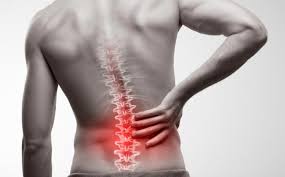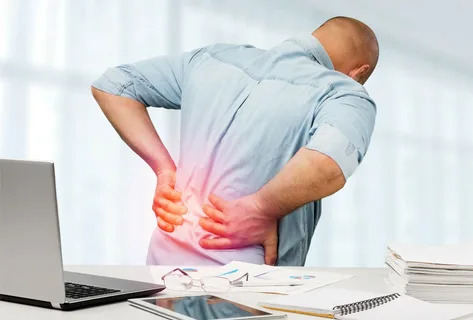Pain Relief Through Physical Therapy: An Overview

Physical therapy (PT) is a crucial healthcare profession focused on improving mobility, function, and quality of life through targeted exercises, manual therapy, education, and patient empowerment. This article provides an in-depth overview of how physical therapy can effectively relieve pain, enhance rehabilitation, and promote overall well-being for individuals with musculoskeletal and neurological conditions.
Understanding Physical Therapy
1. What is Physical Therapy?
Physical therapy encompasses a range of treatments designed to restore movement and function, relieve pain, and prevent disability. Physical therapists (PTs) are licensed healthcare professionals who assess, diagnose, and treat individuals of all ages with medical conditions or injuries that limit their ability to move and perform daily activities.
2. Goals of Physical Therapy
The primary goals of physical therapy include:
-
Pain Relief: Using various techniques to alleviate pain and discomfort.
-
Improving Mobility: Enhancing flexibility, range of motion, and strength.
-
Rehabilitation: Facilitating recovery from injuries, surgeries, or chronic conditions.
-
Functional Improvement: Helping individuals perform daily activities more effectively and independently.
-
Prevention: Educating patients on injury prevention strategies and promoting overall health and wellness.
Physical therapy can benefit individuals with a wide range of conditions, from sports injuries and orthopedic surgeries to neurological disorders and chronic pain syndromes.
Techniques Used in Physical Therapy for Pain Relief
1. Therapeutic Exercises
Therapeutic exercises are a cornerstone of physical therapy, tailored to each individual’s needs and goals. These exercises focus on:
-
Strength Training: Strengthening muscles around affected joints or areas to improve stability and support.
-
Stretching: Improving flexibility and range of motion to reduce stiffness and enhance mobility.
-
Cardiovascular Conditioning: Engaging in aerobic exercises to improve overall endurance and cardiovascular health.
Physical therapists prescribe and supervise these exercises to ensure they are performed correctly and safely, promoting optimal recovery and pain relief.
2. Manual Therapy
Manual therapy involves skilled, hands-on manipulation and mobilization of muscles, joints, and soft tissues. Standard manual therapy techniques include:
-
Joint Mobilization: Gentle movements are applied to specific joints to reduce pain and improve mobility.
-
Soft Tissue Mobilization: Massage and manipulation of muscles, tendons, and ligaments to alleviate tension and improve circulation.
-
Myofascial Release: Techniques to release tightness and trigger points within the fascia (connective tissue) surrounding muscles.
Manual therapy can help reduce pain, improve flexibility, and enhance overall function, particularly in individuals with musculoskeletal disorders.
3. Modalities
Physical therapists may use modalities to complement therapeutic exercises and manual therapy, providing additional pain relief and promoting healing. Common modalities include:
-
Heat Therapy: Applying heat to muscles and tissues increases blood flow, relaxes muscles, and alleviates pain.
-
Cold Therapy: Using ice packs or cold compresses reduces inflammation, numbs pain, and promotes healing.
-
Electrical Stimulation (E-Stim): Applying electrical currents to nerves and muscles reduces pain, improves muscle strength, and facilitates tissue healing.
-
Ultrasound: Using sound waves to generate heat deep within tissues, promoting circulation and reducing pain and stiffness.
These modalities are often combined with other physical therapy techniques to optimize outcomes.
Conditions Treated with Physical Therapy
Physical therapy can effectively treat a wide range of conditions that cause pain and impair function, including:
-
Musculoskeletal Injuries: Such as sprains, strains, fractures, and post-surgical rehabilitation.
-
Back and Neck Pain, Including herniated discs, spinal stenosis, and degenerative disc disease.
-
Arthritis: Osteoarthritis and rheumatoid arthritis, focusing on pain management and joint mobility.
-
Sports Injuries: ACL tears, rotator cuff injuries, tennis elbow, and other sports-related injuries.
-
Neurological Disorders: Stroke, Parkinson’s disease, multiple sclerosis, and spinal cord injuries, focusing on improving mobility and functional independence.
Physical therapists develop individualized treatment plans based on comprehensive evaluations and patient-specific goals, ensuring targeted and effective care.
Integrating Pain Relief Medication with Physical Therapy
1. Role of Pain Relief Medication
Pain relief medication may be prescribed or recommended in conjunction with physical therapy to manage pain and enhance treatment outcomes. Common drugs used include:
-
NSAIDs (Nonsteroidal Anti-Inflammatory Drugs): To reduce inflammation and alleviate pain associated with musculoskeletal conditions.
-
Muscle Relaxants: To relieve muscle spasms and facilitate physical and manual therapy exercises.
-
Analgesics, Such as acetaminophen, to manage pain and improve tolerance to therapeutic interventions.
Physical therapists collaborate with physicians and healthcare providers to coordinate medication management and ensure comprehensive care for patients.
2. Comprehensive Pain Management
Combining physical therapy with pain relief medication offers a holistic approach to pain management, addressing both the underlying causes of pain and symptoms. Physical therapy aims to improve function and mobility, while medication provides temporary relief to facilitate active participation in treatment.
Benefits of Physical Therapy for Pain Relief
1. Non-Invasive and Drug-Free Approach
Physical therapy emphasizes conservative, non-invasive treatments to manage pain and promote healing without the use of surgery or long-term medication dependence.
2. Individualized Treatment Plans
Physical therapists customize treatment plans based on patients’ unique needs, goals, and medical history, ensuring personalized care and optimal outcomes.
3. Long-Term Pain Management
By addressing underlying issues and improving physical function, physical therapy helps reduce the recurrence of pain and minimize the need for ongoing pain relief medication.
Conclusion
In conclusion, physical therapy offers effective pain relief and rehabilitation for individuals dealing with various musculoskeletal and neurological conditions. Through therapeutic exercises, manual therapy techniques, and complementary modalities, physical therapists help alleviate pain, improve mobility, and enhance overall quality of life. Integrating pain relief medication with physical therapy can provide comprehensive care, addressing immediate pain symptoms while promoting long-term recovery and functional independence. For anyone experiencing pain or seeking to improve physical function, consulting with a physical therapist can be the first step toward achieving lasting pain relief and optimal musculoskeletal health. 




